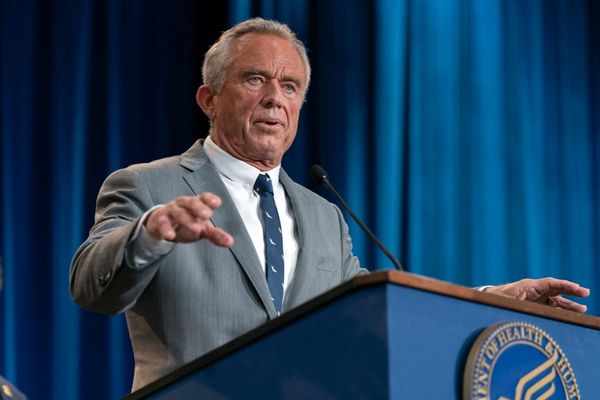
The Government was right to reshape public health services, but lacks the political leadership to take the public along with it
Opinion: There is a great New Zealand tradition of launching major policy changes in a vacuum and then becoming disillusioned when they do not turn out as expected. The 1991 Resource Management Act and the 1993 Privacy Act – which have led to so many subsequent interpretation problems – were introduced without sufficient background explanation as to their intent. Last year’s health reforms now look like going the same way.
Early in 2018 the Labour-led government announced that the health targets put in place by the previous Labour government were being abolished as they were no longer fit for purpose. Instead, the whole system would be reorganised to better meet future needs. Four years later, that new system was put in place, but with no performance targets.
READ MORE:
* A diagnosis for an ailing health sector
* Verrall flexes health system's muscles
* Aged care 'deliberately' underfunded
A year on, reviews of the first year’s progress of the new national health agency, Te Whatu Ora, are at best mixed. Only its chief executive and the minister of health have rated progress positively. The chief executive circumspectly describes the last year as “discovering what we’ve inherited and working out how to make things go faster”.
The health minister Ayesha Verrall, naively and excessively, says a “phenomenal amount of rewiring” has been taking place without “service disruption due to the reforms”. In the next breath she acknowledges waitlists have grown and that there has been an increase in acute demand but argues these are not because of the reform process.
Others are more critical. Tellingly, given the lack of performance standards, the medical director of the College of General Practitioners says that the proposed changes are “still ideas” without a “clear conversation about how we get there”. Senior clinicians say they are stretched beyond capacity and what they need are the tools and resources to make improvements in the next 6-12 months.
The problem with health service provision is that patient demand for, and expectation of, service is almost infinite, with a constant expectation of immediate improvement in their circumstances
As far as the public is concerned, there have not yet been any tangible improvements in the public health system since last July. Surgical waitlists have shot up dramatically and show no signs of falling soon. Patients waiting for specialist services – such as ECGs – are waiting up to a year or more because of staff shortages, and on the health frontline GPs and nurses are as busy as they have ever been.
At an individual patient level, many people are falling behind because of the cost-of-living crisis and the price of care becoming a significant barrier. According to the latest Tend Health Index surveying 1500 New Zealanders across the country, most people delay visiting the doctor until necessary. Notably, 54 percent of respondents are not up to date with their melanoma skin checks and 51 percent have never even had a skin check. Furthermore, 38 percent of parents to respond do not know if their children are up to date with all their recommended vaccinations, 26 percent of women are behind on their cervical smear screening, 22 percent of women aged 40 and over are behind on their mammogram screening, and 30 percent of men aged 40 and over are behind on their prostate screening.
Proponents of the progress of the health reforms argue – with some validity – that the changes now underway could never be expected to make huge progress immediately. But the problem with health service provision is that patient demand for, and expectation of, service is almost infinite, with a constant expectation of immediate improvement in their circumstances.
From the time Te Whatu Ora came into being a year ago it was inevitable it would be subject to the criticisms it is currently facing. This was in large part because, as with so many of its reforms, the Government oversold what the changes would mean. Restructuring the public health system as intended is probably the biggest task any government could undertake. Yet the Government did little to lower public expectation of immediate improvements. Moreover, the lack of deliverables on an annual basis left the public with no realistic sense of the likely progress of the reforms.
The consequence has been a public perception of no real change – the minister’s overly enthusiastic, myopic optimism notwithstanding – and deteriorating services right across the health sector. Restoring waning public confidence in the system’s capacity to meet today’s health needs is just as important as reshaping it to meet the demands of the future but does not appear to have had the attention it should have had over the past year.
To restore public confidence in the health reforms, the Government needs to adopt a two-track approach. In addition to planning the shape and direction of the future, and the recruitment and training of the health professionals required, there needs to be an urgent refocusing on meeting the health needs of today.
That will of necessity mean the establishment of short-term performance targets, something this government appears stubbornly and inexplicably opposed to. The sector must be resourced, and then held accountable for the delivery of those targets. Reducing surgical waitlists, enabling faster access to specialist services, ensuring vaccination and screening tests are occurring on a regular basis, are all just as important priorities today as they will be in the future. They need to be addressed as such.
The health reform process is a rare, vital opportunity to reshape New Zealand’s public health services to work more effectively in the future, to be better placed to cope with the various challenges and opportunities. But the process is in danger of falling over – because of its inherent complexity – if people cannot see improved access to services and a higher quality of care as a result. The Government’s failure to set achievable short-term goals, and to better manage public expectations poses the biggest threat to Te Whatu Ora.
The Government was right in its ambition to reshape New Zealand’s public health services, so they are better placed to meet the challenges ahead. But so far it lacks the political leadership required to give effect to the reforms and to take the public along with it.







